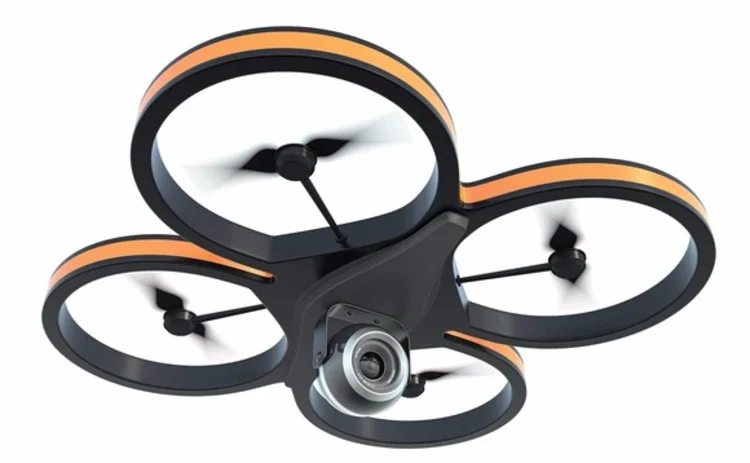
Drone cover demand predicted to rise

The commercial market for drone insurance is ready to take off, with personal use following in its slipstream
Until recently any mention of drones would have conjured up images of futuristic and military type pursuits far removed from ordinary businesses and people. There is however a nascent commercial drone market according to industry figures who also raise the possibility of demand for insuring the personal use of unmanned aerial vehicles (UAV).
JRW Group’s launch of an online portal called Insure4Drones, in conjunction with ArgoGlobal, offering click-and-buy insurance products for the UK’s commercial drone market, has kept the spotlight on the sector.
Taking off
Scott Bradbury, an underwriter at ArgoGlobal, pointed out that the main uses of drones they encounter are for surveillance, aerial photography and filming. The organisations typically involved in these activities are the police and television companies, and loss adjusters use drones to survey crash sites, he added.
Estate agents are also using the technology to show off properties from different angles and heights while National Rail and oil companies use drones to inspect power lines and rigs respectively. Bradbury continued: “Anything involving a helicopter with someone looking out and filming or actually just inspecting with their own eyes can now be done by hovering a fairly cheap piece of equipment over it.”
Bradbury detailed that the covers ArgoGlobal offers include third-party liability for accidents involving other people or property, physical damage to drones and ancillary equipment and employer’s liability. He added that products for cyber, where drones are hacked and used maliciously, and breaches of privacy are also available on the wider market.
Richard Bayman, head of aerospace at ArgoGlobal, said while the likes of the military have been using drones for quite some time the commercial market has only really come into being in the last couple of years. “It’s something that we’ve been working on for the last 18 months,” he added. “It’s a very new market for everyone and our peers are no different.”
Bayman reflected: “Rather than what we have sitting in our books now, it’s actually the potential of what we perceive it could be that is of interest to us.”
Future flight
James Gadbury, a broker at Prospect Insurance Brokers which offers specialist drone insurance and trades as UAV Protect, also believes the market could develop rapidly. He cited a survey conducted by The Risk Management Society last year which, he said, predicted that 40% of American businesses will use drones in the future. While urging caution, Gadbury added: “If you imagine that 40% of businesses in the UK could be using them, then that’s a pretty massive market.” The broker pointed to surveying and engineering firms being among the users of drones with other areas like agriculture and delivery expected to feature more prominently.
For brokers seeking to enter and educate themselves about the sector, Philip Tansley, legal director at law firm RPC, had the following advice. “If a broker is interested in drone insurance or has an insured who has got drones and wants to understand what their insurance requirements are, the obvious thing to do is speak to one of the specialist underwriting agencies,” he stated, while raising the option of consulting lawyers.
Rise and fall
Contemplating the personal lines market, Bradbury indicated a change in the regulations requiring compulsory liability cover could lead to that segment becoming significant. But Neil Grimshaw, director at Ravenhall Risk Solutions, suggested private users may find it cheaper to join clubs and get insurance through such organisations rather than through the general market.
He said the commercial drone sector is a fast-changing marketplace and added: “Some businesses are joining forces, some are being acquisitive and some are failing.”
Grimshaw continued: “The market has increased exponentially over the past three years or so,” noting the private sector has traditionally been a lesser player. Referring to private sector work, he explained: “The cost of UAVs has come down significantly. Technology in the sector is rapidly advancing and as a result that’s made it more of an accessible market.”
| Flying high |
| The Civil Aviation Authority’s (CAA) website shows that there are currently 1,461 commercial operators of drones in the UK. Anyone who wants to operate a drone for commercial use must complete a training course, typically including a ground exam and flight test, at one of a number of centres authorised by the regulator. Participants on such courses would then have to apply to the CAA for a licence. The body’s Dronecode applies to hobbyists and commercial operators, with some exceptions for the latter, and stipulates that a drone must never be flown beyond the line of sight of the person operating it. It also states that a drone must always be operated at least 50 metres away from a person, vehicle, building or structure. And unmanned aerial vehicles must not be flown within 150m of a congested area or large group of people at, for example, a sporting event or concert. |
Only users who have a paid subscription or are part of a corporate subscription are able to print or copy content.
To access these options, along with all other subscription benefits, please contact info@insuranceage.co.uk or view our subscription options here: https://subscriptions.insuranceage.co.uk/subscribe
You are currently unable to print this content. Please contact info@insuranceage.co.uk to find out more.
You are currently unable to copy this content. Please contact info@insuranceage.co.uk to find out more.
Copyright Infopro Digital Limited. All rights reserved.
As outlined in our terms and conditions, https://www.infopro-digital.com/terms-and-conditions/subscriptions/ (point 2.4), printing is limited to a single copy.
If you would like to purchase additional rights please email info@insuranceage.co.uk
Copyright Infopro Digital Limited. All rights reserved.
You may share this content using our article tools. As outlined in our terms and conditions, https://www.infopro-digital.com/terms-and-conditions/subscriptions/ (clause 2.4), an Authorised User may only make one copy of the materials for their own personal use. You must also comply with the restrictions in clause 2.5.
If you would like to purchase additional rights please email info@insuranceage.co.uk







